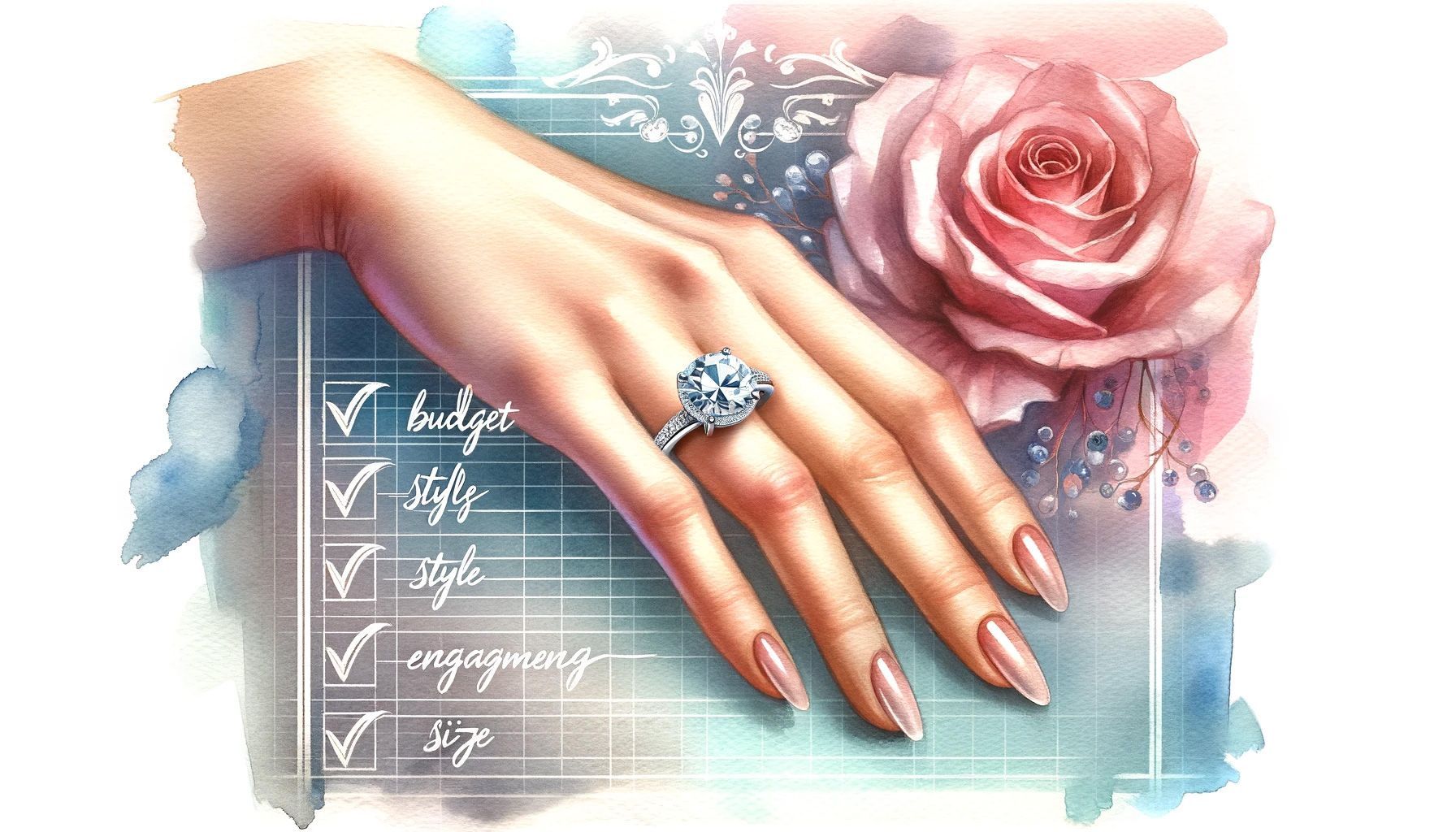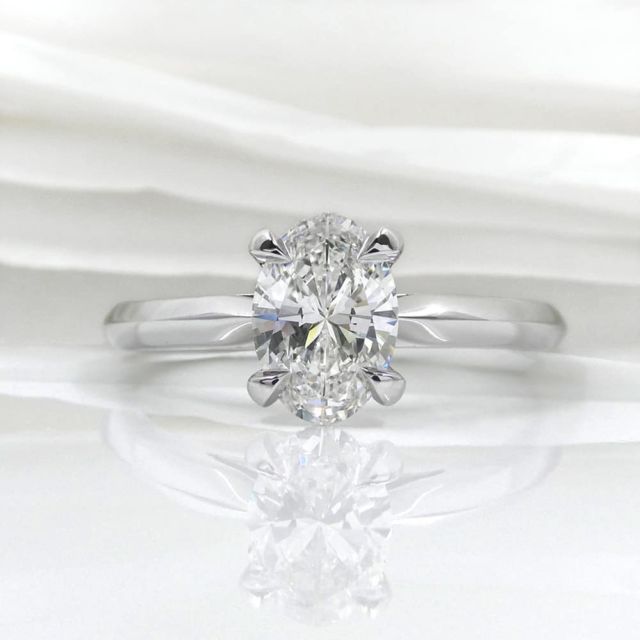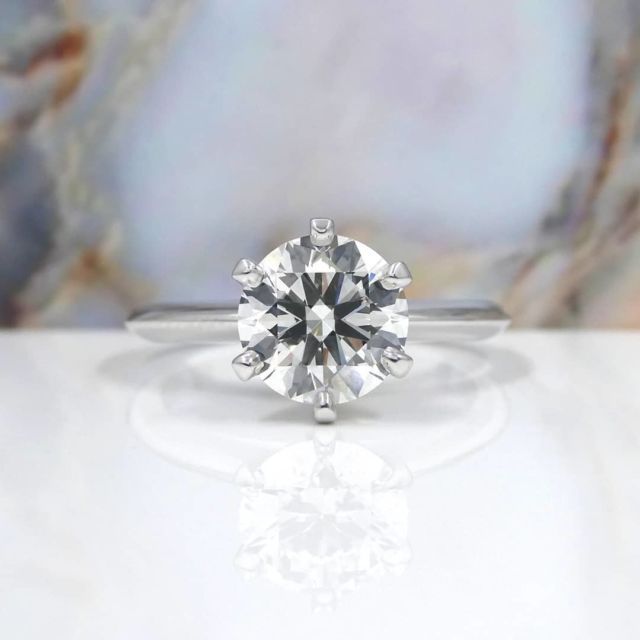Jonathan Goldberg is the Founder, President & CEO of Kimberfire – a brilliant way to buy diamond engagement rings, fine diamond jewelry, and loose diamonds in Toronto, ON and across Canada. Previously Jonathan worked in the Middle East, Belgium, and Canada in various roles in the luxury goods sector including manufacturing, business development, and diamond wholesale. Jonathan also spent a number of years as an investment banker with one of the large Canadian banks, where he focused on natural resources and diversified issuers.
Top 3 Tips for Buying an Engagement Ring

So you’re ready to spend the rest of your life with one special person. Congratulations! As someone who has popped the question, I know how exciting this time is. I also know how overwhelming it can be. Planning for the future, finding that perfect ring, figuring out what you’re going to do tomorrow… it adds up. Mostly, though, it’s exciting. And there’s no reason why finding an engagement ring should be anything other than that.
I have a passion for diamonds. My specialty is helping a client find the perfect diamond and a beautiful ring to match. If you’ve had the chance to visit us at Kimberfire then you know that, above all, we appreciate the importance of selecting the best and brightest diamond possible – while being mindful of your budget and priorities. No couple needs unnecessary financial stress at any time, especially as they start their lives together. With that in mind, here are our top three tips for buying an engagement ring.
Know your budget and stick to it.
Whether you’re a seasoned executive or just recently finished school, only you know what you can afford to spend on an engagement ring. While this is an important purchase, nothing should come in the way of your financial security. Decide what you can comfortably spend and stick with it. An expert in the field can help you get the most out of your budget without sacrificing quality.
Figuring out an appropriate budget can be challenging, so do not hesitate to contact a jeweler you trust to discuss your options. Should you spend three months’ salary? Often no… but maybe. It depends. An engagement ring is a deeply personal gift representing much more than the amount paid. Stretching for a certain size or clarity may or may not be the right choice for you. However, if you or your partner have certain expectations, it may be worthwhile to consider a savings plan to get you there. We have created beautiful diamond rings for $2,000 for recent college graduates, to rings valued in the six figures for couples with years and stories behind them. I can assure you that you will be able to do well by your partner, no matter your financial ability.
Important side note – after working to save for such a valuable purchase, please remember to insure the ring immediately and at its full replacement value. This is a piece of jewelry that will be worn constantly (we hope!), and you want to make sure you are fully covered for loss and theft.
Maximize the visual appeal of the diamond.
When advising clients, our objective is usually to maximize the size of the diamond within a set budget or to minimize the price for a specific diamond size, in each case, without going below certain quality thresholds. Accomplishing this comes down to finding a balance between the main diamond-grading criteria – commonly known as the 4 Cs: Carat, Cut, Clarity, and Colour.
Carat is the weight of the diamond, which is directly related to its size. Maximizing the size of the stone is the main priority for most of our clients, but never at the expense of quality.
Cut is a measure of the shape of the diamond – specifically, how it compares to ideal proportions. A better cut maximizes the diamond’s brilliance, giving it that sought-after sparkle. We recommend keeping to “very good” or “excellent” cut diamonds. The brilliance of a well-cut diamond is what makes these stones so special and, because of that, we would never suggest that you sacrifice on cut.
Clarity is a measure of how clean the diamond is. Most diamonds have one or more inclusions (imperfections), some of which are visible to the naked eye. Finding a brilliant diamond with a small, non-visible inclusion is often possible. For that reason, we usually work with clients to find diamonds graded “SI” (slightly included) or “VS” (very slightly included). Generally, diamonds above this range (“VVS” – very very slightly included, and “IF” – internally flawless) are more expensive and require a sacrifice in size for a clarity difference that is not visible to the naked eye. On the other hand, a diamond graded lower than “SI” clarity will most likely have visible imperfections. Any size gained by going below this range isn’t worth it, as it rarely leads to a brilliant stone. Regardless of the clarity grade, evaluating the diamond with an expert you trust is essential.
Colour is a measure of how colourless the diamond is (the highest being D, then E, and so forth). Diamonds at the highest end of the colour scale sell at a premium, meaning you will have to sacrifice significantly on size or clarity to keep to your budget. On the other hand, venturing too low on the colour scale will leave you with an off-colour stone. We recommend the “F” to “I” colour range for a good breadth of selection, and to maximize the size of your diamond, while keeping to one that is sure to face up a brilliant white.
The grade is only as good as the grader.
Any diamond you buy should have a certificate that, amongst other things, grades the stone on the 4 Cs. Unfortunately, while there are many different diamond certification laboratories, only a few are known to have consistent, strict, and ethical standards.
Purchasing a diamond graded by even the most stringent lab doesn’t mean you should skip a diligent evaluation. However, buying a diamond graded by a lenient lab can be as risky as blindly picking one from a hat. The only two labs we trust and recommend for natural, earth-mined diamonds are the Gemological Institute of America (“GIA”), which developed the current industry standards, and the American Gem Society (“AGS”). Both of these labs are non-profits with reputations for being consistent and ethical in their evaluations. We accept International Gemological Institute (“IGI”) reports for lab-grown diamonds, as most are sent there for evaluation.
Ready? Are you still excited? Good, you should be! As a final bit of advice, make sure to find a jeweler that you trust. Of course, we would love to work with you on this big purchase and help you get the next chapter of your life started right.
Kimberfire is the brilliant way to buy a custom engagement ring and high-quality diamond jewelry. A technology-driven approach to sourcing diamonds directly from the manufacturer, custom jewelry manufacturing, and non-retail office space allows for the most competitive pricing, with the expertise, craftsmanship, and in-person experience of the highest-end jewelry brands. Contact us today to get started!
About Kimberfire
A brilliant way to buy high-quality custom engagement rings, diamonds, and jewelry. Discover expert guidance, complete transparency, and unmatched value in Toronto and across Canada.
Share this entry
Leave a Reply
Want to join the discussion?
Feel free to contribute!







